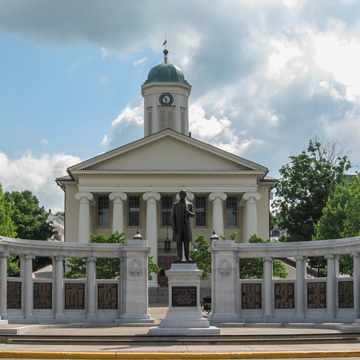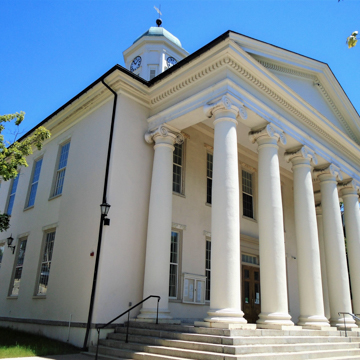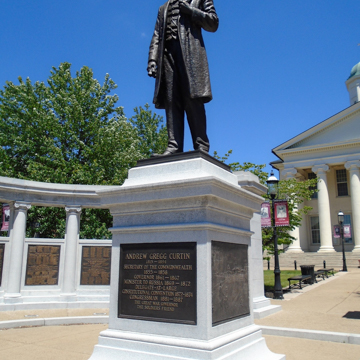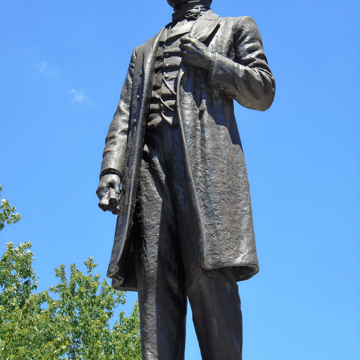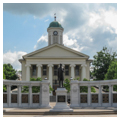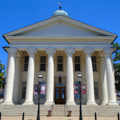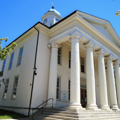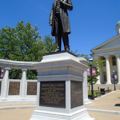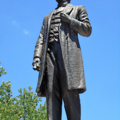Now an imposing two-story templelike building, the courthouse began in 1805 as a modest limestone structure. The Ionic portico and pediment were added in 1835. Around 1855, the building of 1805 was replaced by a longer structure, although the portico was retained. The tall, domed cupola with classical detailing was added at this time. The rear of the building was further extended and the interior completely refurbished in 1909. On the interior, a central hall on the first floor is flanked by offices, and courtrooms are located on the second floor.
The colonnade in the courthouse square was designed in 1906 by Joseph M. Huston of Philadelphia, architect of the Pennsylvania State Capitol in Harrisburg. In the center of the colonnade is William Clark Noble's c. 1913 bronze statue of Andrew G. Curtin, Pennsylvania's governor during the Civil War and one of five commonwealth governors from Bellefonte.


